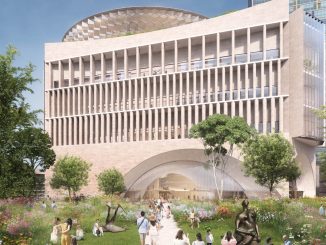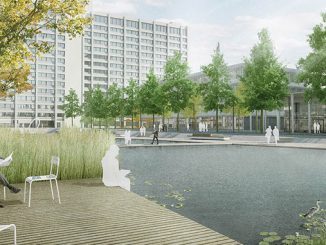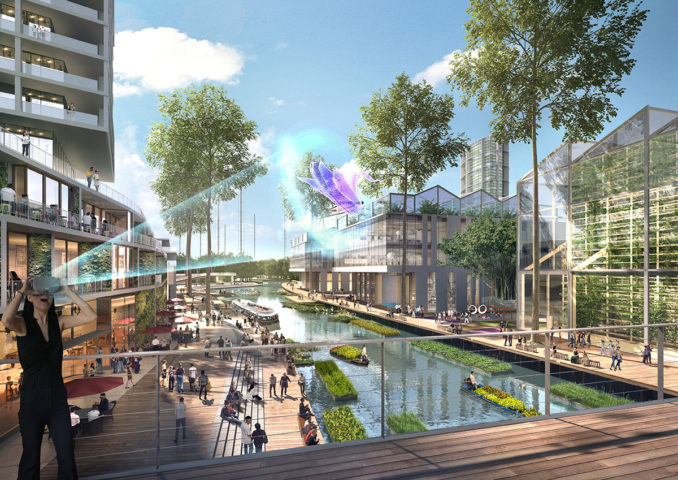
The government of Ho Chi Minh City has announced the selection of Sasaki with collaborator enCity to further explore their ideas for a burgeoning innovation district in the eastern part of the city. From a shortlist of six international design firms, Sasaki, a global practice with offices in Boston and Shanghai, and enCity, an international planning practice based in Singapore and Vietnam, were awarded first place for The Highly Interactive Innovative Districts. The competition, launched in April 2019, solicited planning and design ideas for over 22,000 hectares (54,000 acres) of the city throughout District 2, District 9, and Thu Duc District.
6 Innovation Hotspots
The planned innovation district is envisioned as a significant economic driver for the city and region, connecting research, entrepreneurship, academia, industry, and the local community to create a diverse innovation eco-system. “Ho Chi Minh City has the potential to expand upon the traditional triple helix model of an innovation district’s structure– involving academia, government, and industry– to more directly involve communities and society at the core of its innovation activities while ensuring long-term ecological and environmental resilience,” explains Sasaki principal Romil Sheth. As part of the design process, the Sasaki team identified six “innovation hotspots” for catalytic investment. Each site leverages existing assets nearby to provide a sector-specific programming approach.
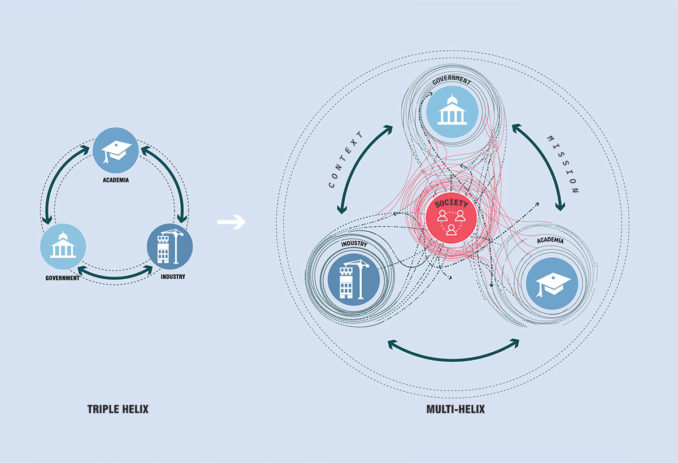
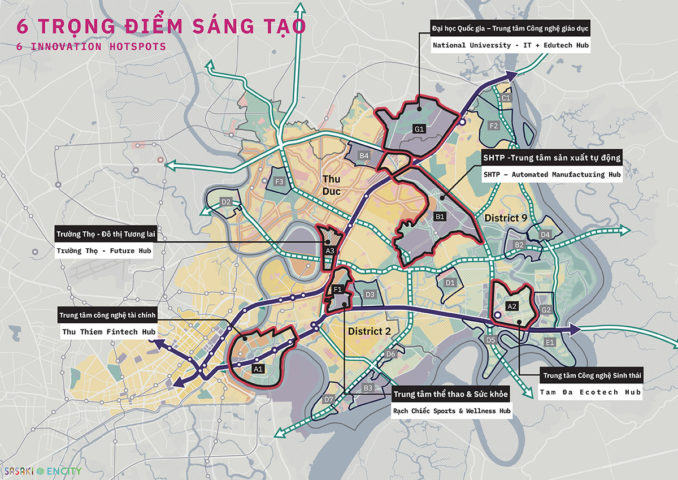
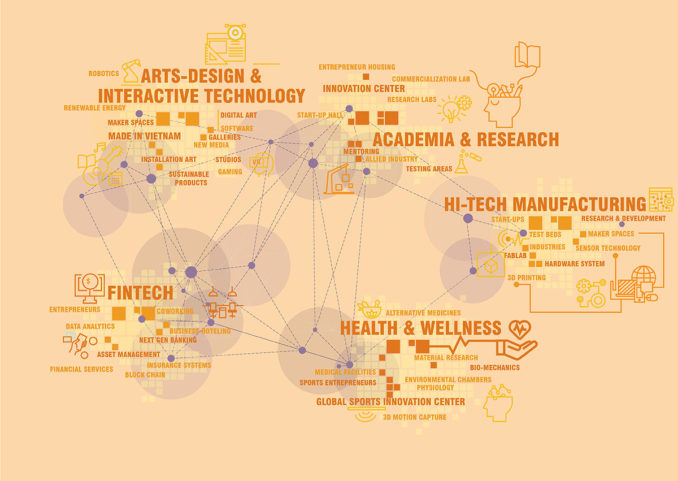
1. The Thu Thiem FinTech Hub is designed to host a critical mass of financial services companies. The site benefits from its proximity to the urban core of Ho Chi Minh City and frontage along the Saigon River. Existing transit connections integrate the Thu Thiem FinTech Hub into a broader network and provide the opportunity for the flow of ideas and capital.
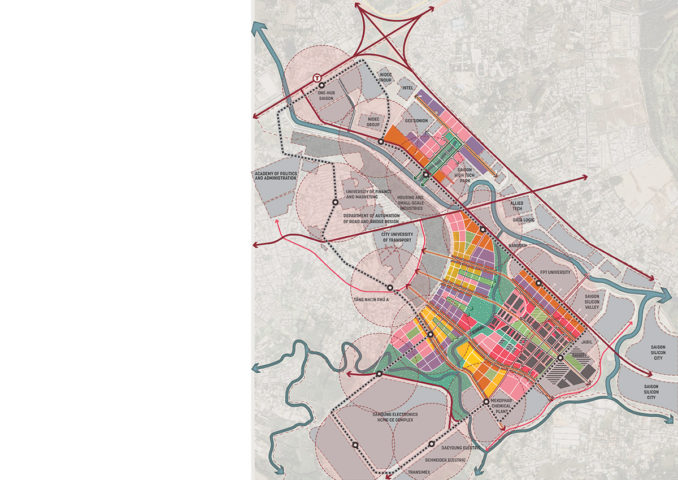
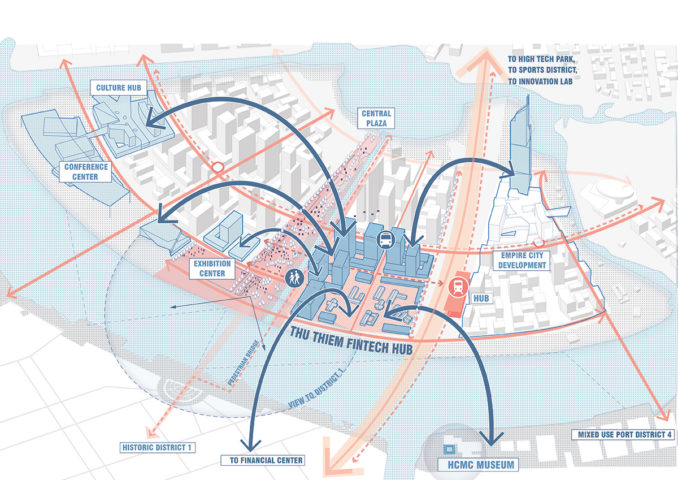
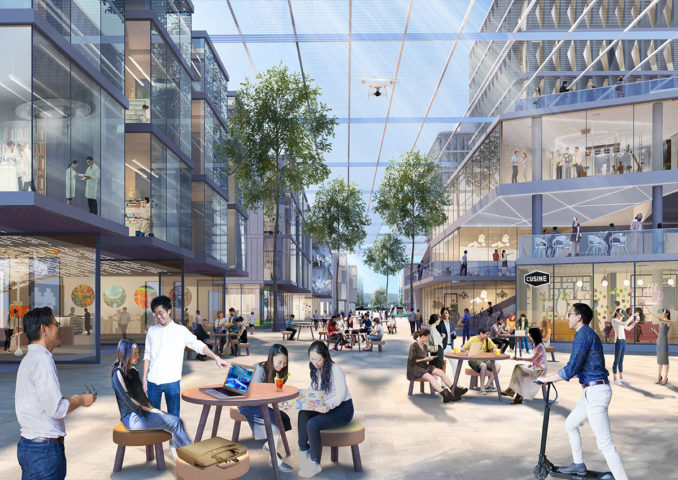
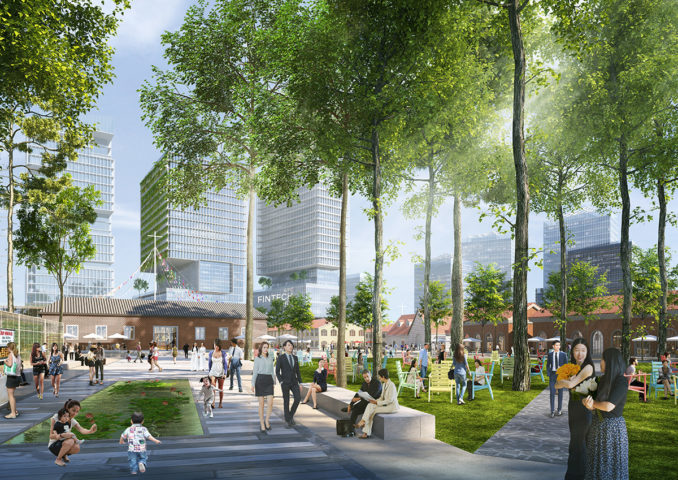
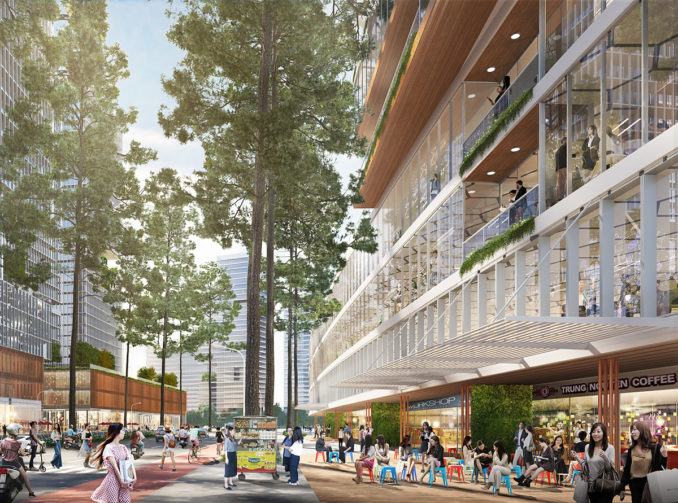
2. The Rach Chiec Sports and Wellness Hub builds upon previous planning efforts for the site as a sports district, focusing on the increasing popularity of the health and wellness industry in Southeast Asia. Rach Chiec emphasizes Ho Chi Minh City’s potential as an international destination for innovation in sports medicine, biosciences, sports-related products, and related industries with the goal of improving the human condition.
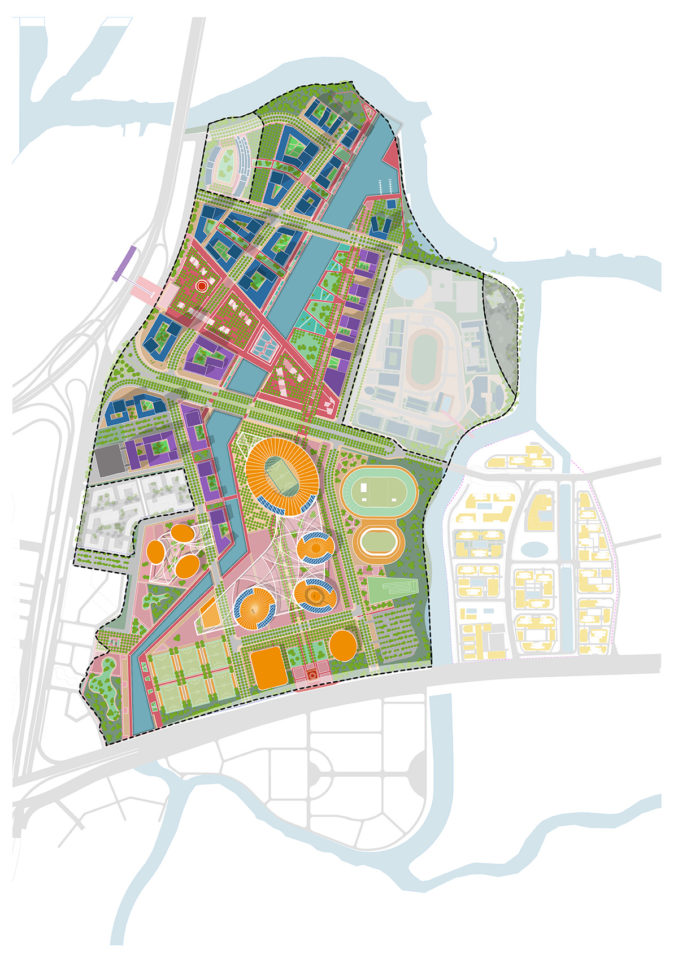
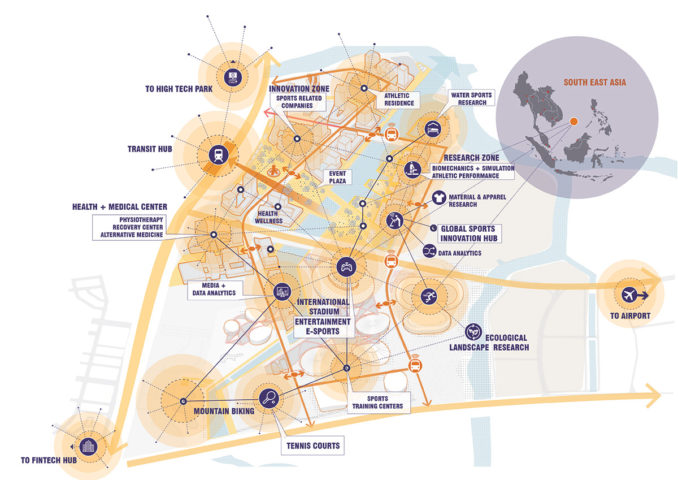
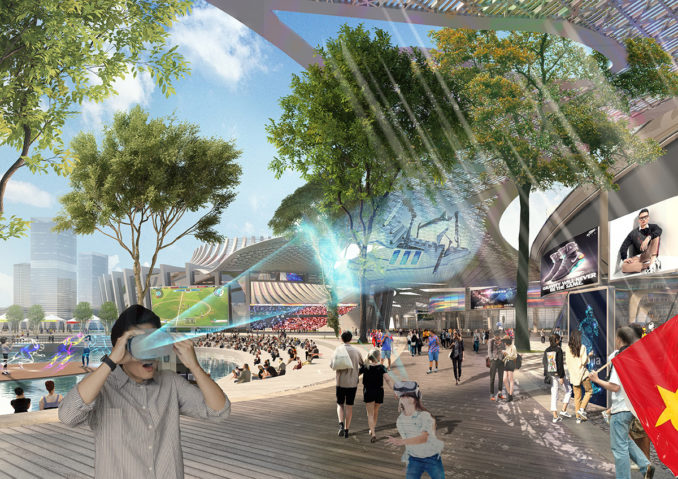
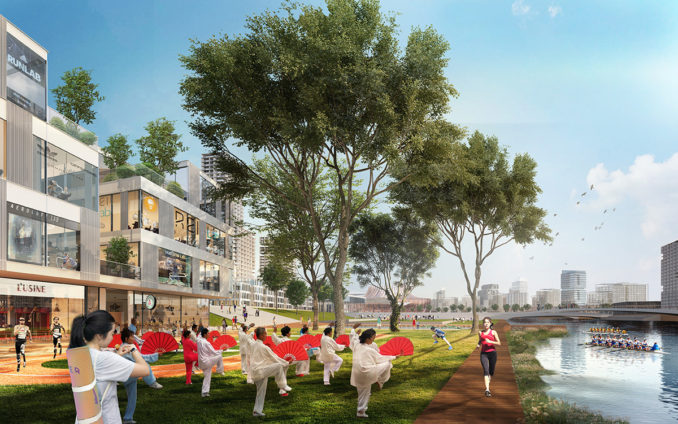
3. The Saigon Hi-Tech Park and Automated Manufacturing Hub currently accommodates multinational high-tech companies and educational institutions. Building on its existing manufacturing capacity, the Saigon Hi-tech Park is envisioned to promote the future of innovative production and design. Connections to adjacent existing and proposed research entities further strengthen the already vigorous manufacturing sector with inventive methods and products.
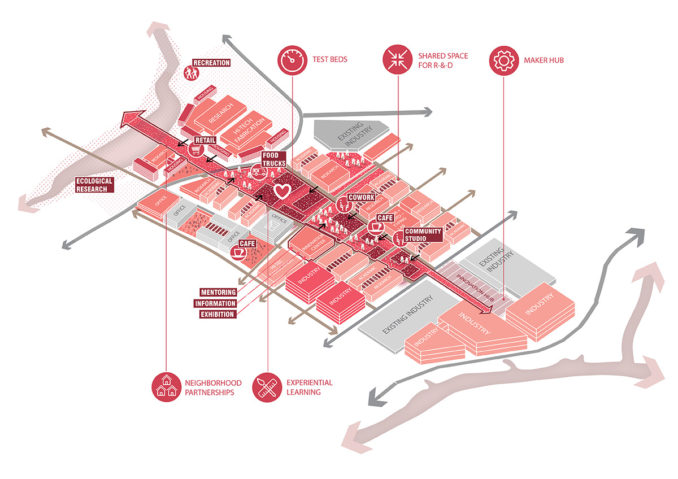
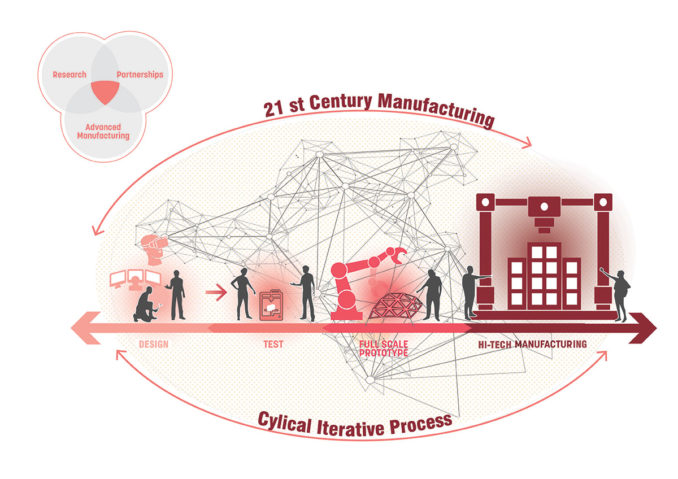
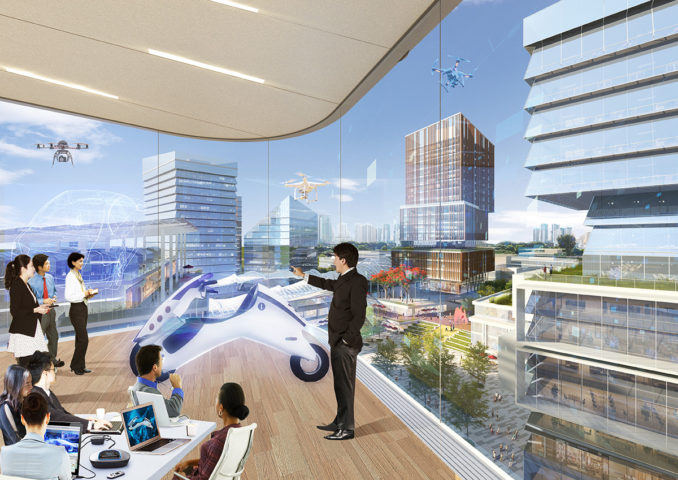
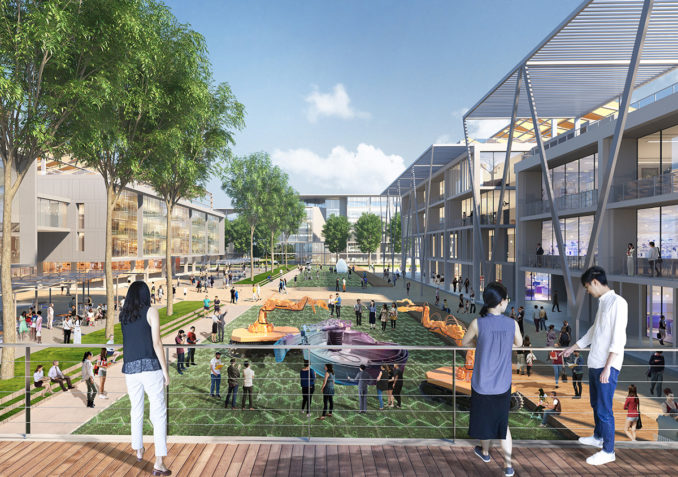
4. The National University IT & EduTech Hub provides a cluster of educational institutions near the Vietnam National University that support the school’s academic mission while spurring additional economic growth. Additional development sites for research, study, and collaboration bridge the gap between knowledge and production and support the teaching of new skills and methods.
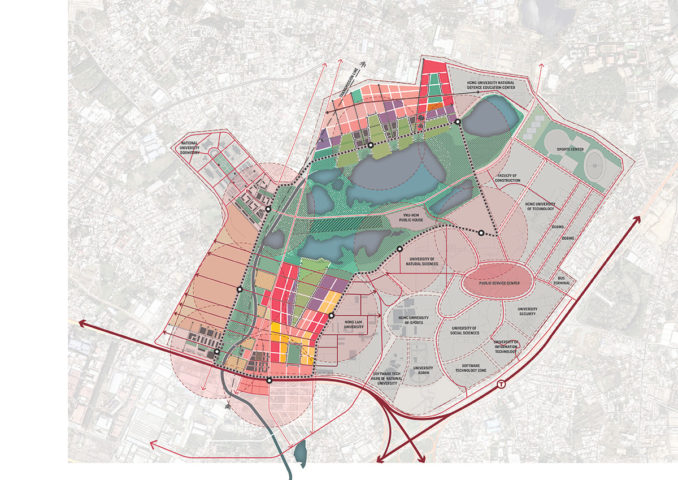
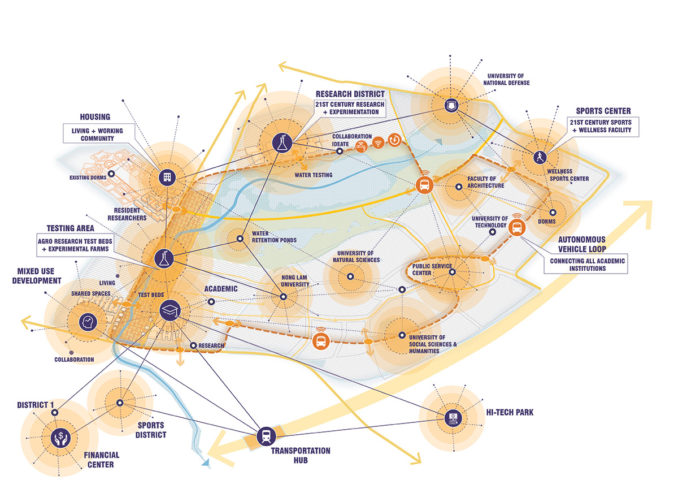
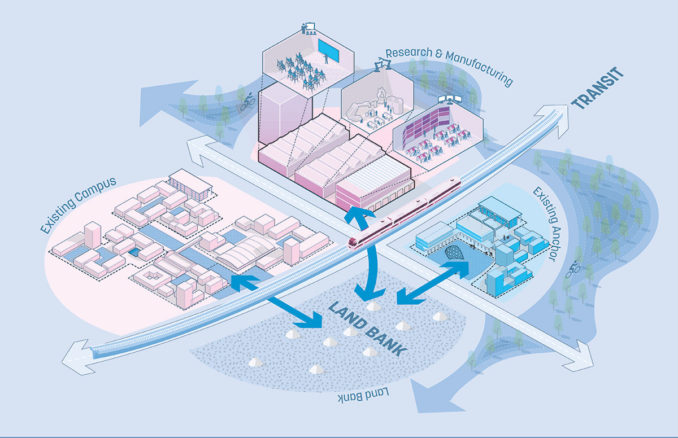
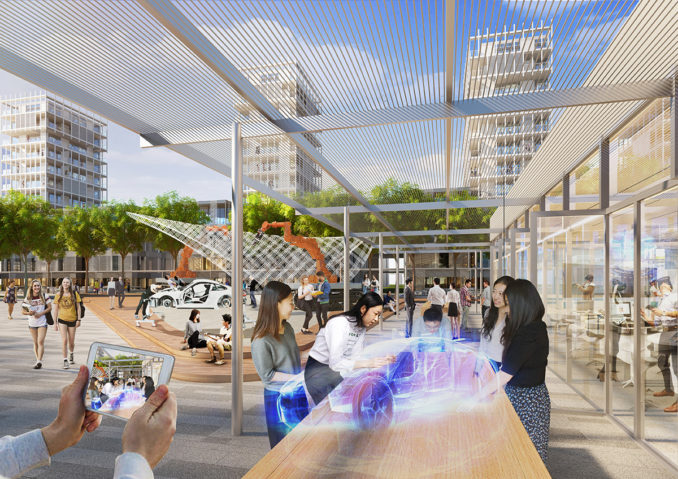
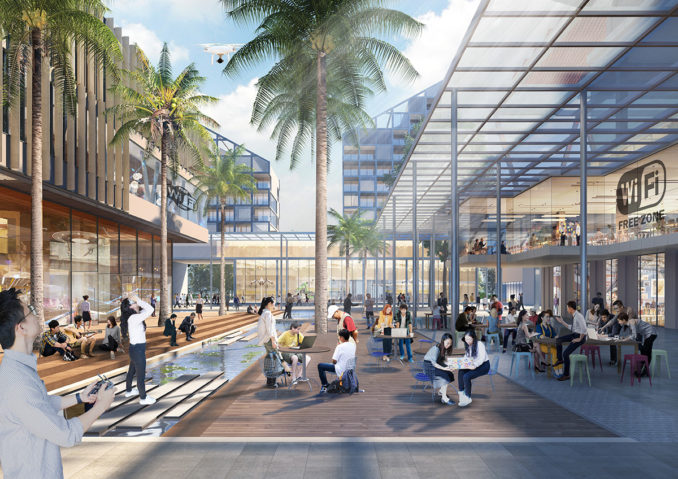
5. The Tam Da EcoTech Hub leverages the natural site conditions of the riverfront to promote eco-tourism and food-processing hub that can support culinary development and agro-tech industries. The most ecologically sensitive district, the Tam Da district clusters development in areas that can support new growth adjacent to existing transit hubs, while allowing for the preservation and protection of environmentally sensitive areas.
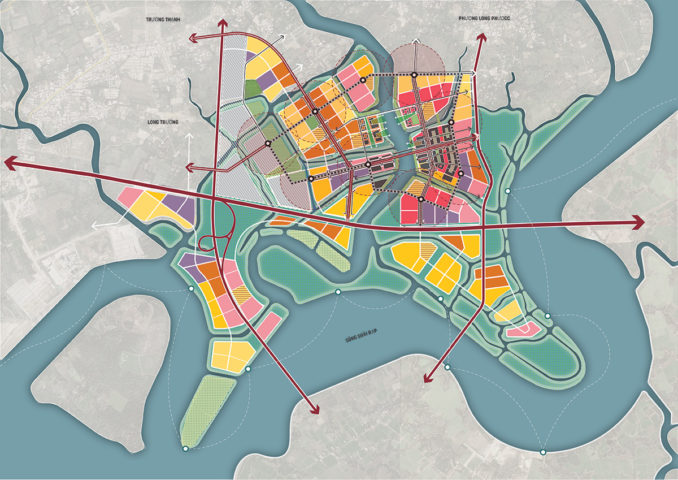
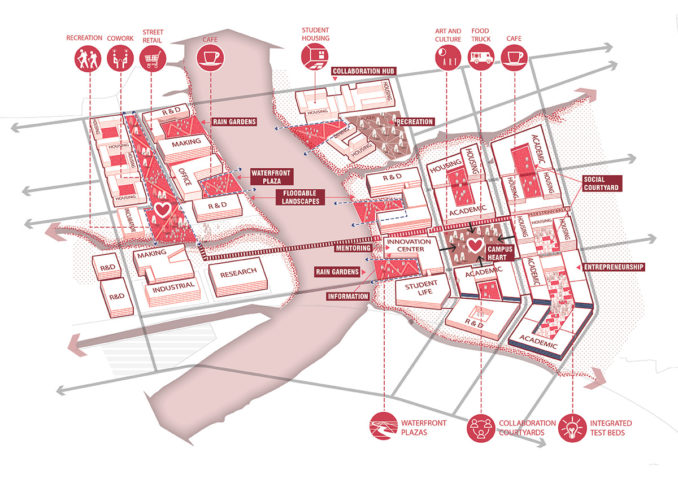
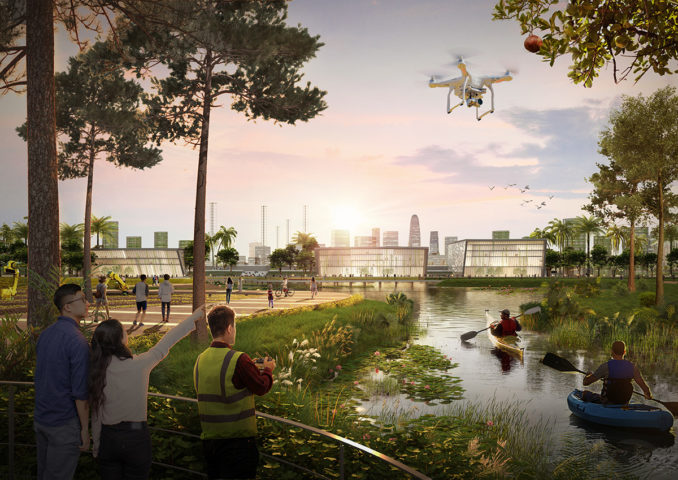
6. The Truong Tho Future Hub leverages the redevelopment of an obsolete riverfront port as an ideal site for a smart city demonstration project. The working port is transformed into a new neighborhood that serves as a model for integrating advanced technologies into all forms of daily life. Resilient and responsive infrastructure, new forms of mobility and communication, adaptive building technology, and a data-infused public realm with a focus on innovation in arts and entertainment are hallmarks of the district.
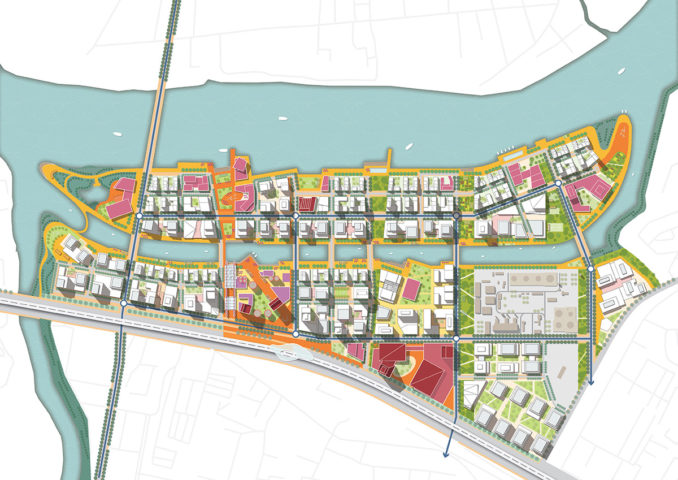
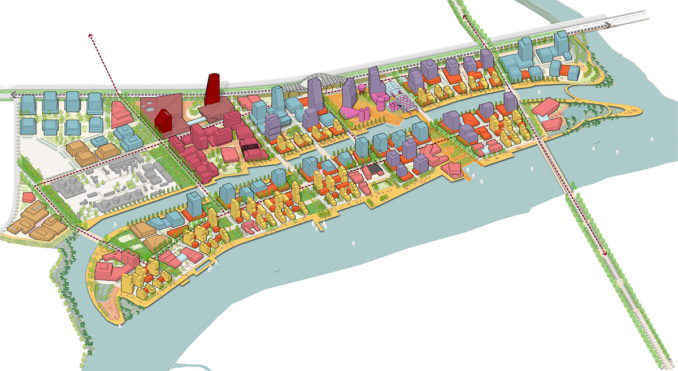
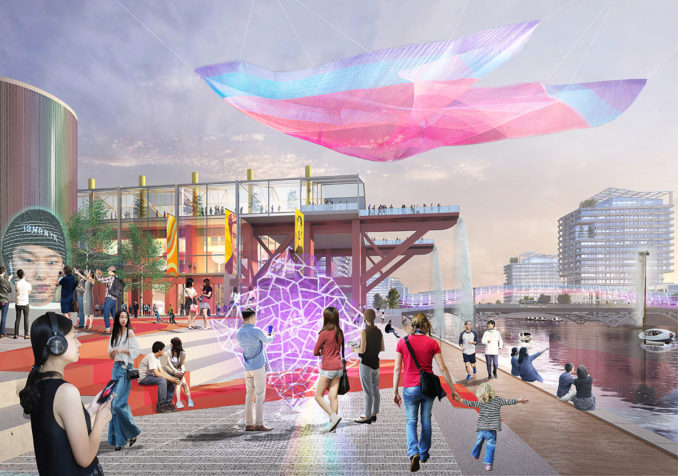
Resiliency Strategies
Southern Vietnam is highly vulnerable to the impacts of climate change. Historically, Ho Chi Minh City has been built upon existing higher ground. The study area for the innovation districts, however, has seen relatively slow growth, with much of the area’s natural of the peat swamps, dry evergreen forests, and mangroves replaced by agriculture and sprawling urban development. The historic environment reveals much about the ecological and risk context of the region. Flood risk is expected to increase in the near future as today’s extreme flood events become more regular and threaten to encompass much of the city. While new developments are being proposed with flood mitigation strategies, it is not feasible to implement large-scale land reclamation that could have detrimental effects to both the ecology and shift flood risk elsewhere. Sasaki’s approach mitigates flood risk through a variety of strategies including: 1) Capitalizing on major industrial relocations and investments; 2) Leveraging the existing land bank of the Vietnam National University already located on higher ground; 3) Building upon recent transportation investments; and 4) Establishing policies that leverage the value of urban land while preserving the absorption capacity of existing landscapes. “The potential of Ho Chi Minh City lies on its long history of innovation and inclusivity, its young and creative work force, and its growth-supportive urban structure,” says Dzung Do Nguyen, Managing Director of enCity. “Our approach aims to cultivate these unique strengths while planning for the region’s long-term adaptability and resiliency.”
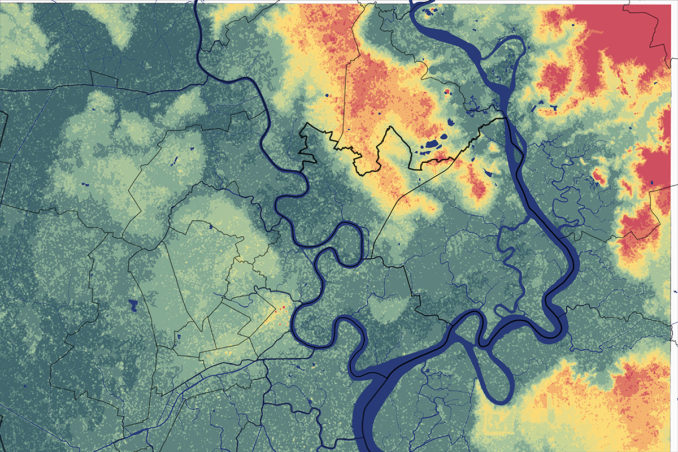
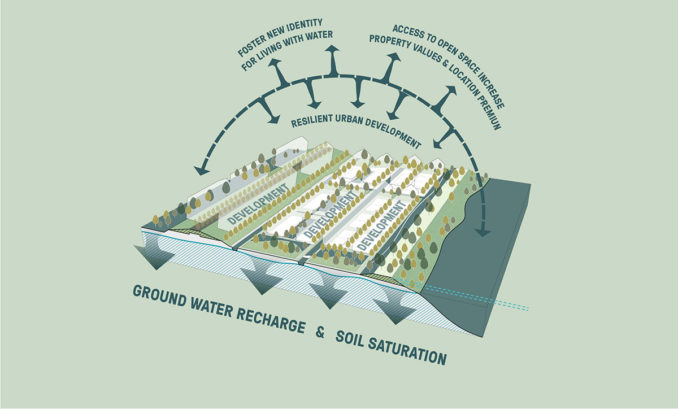
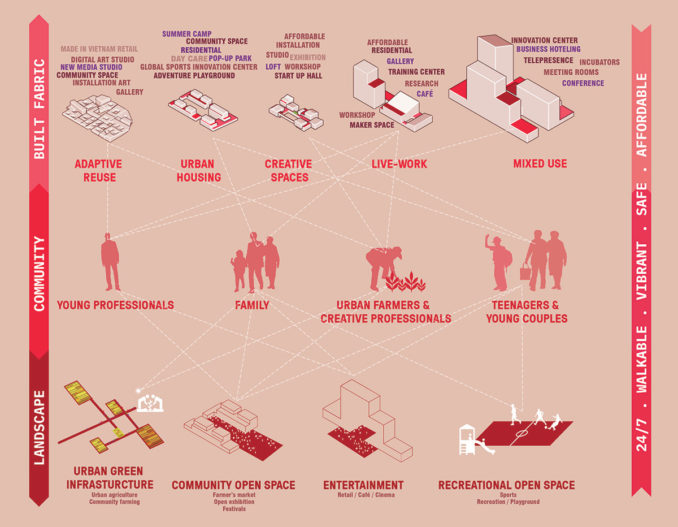
Next Steps
Once the Innovation District is codified into the revised master plan for Ho Chi Minh City, Sasaki and enCity will work closely with the city’s Department of Planning and Architecture (DPA) and other stakeholders on formulating planning and design strategies to fuel catalytic investment and development. The team will also recommend more detailed strategies related to governance, policy, and development mechanisms to shepherd the thoughtful evolution of the city.
“The future of innovation in Ho Chi Minh City must be inspiring and grounded, exceptional and inclusive, transformative and authentic,”
Michael Grove, Prncipal at Sasaki
“This is the charge, and we’re excited to collaborate with the City on building the foundations for the region’s transformation into a 21st century innovation hub.”
Design Firm | Sasaki with enCity
Images Credit | Sasaki

